Whether you are constructing a single-storey house of a skyscraper, there is going to be a moment when someone is going to be working at height. Here are four questions to ask at the start of building work to address some common height safety risks.
Building sites inherently are places where there are plenty of safety risks. Materials being moved into position, high powered or high-pressure equipment being used, trucks and plant often being present and more. Not to mention that the place of work is an unfinished building itself.
With so many risks being present, it is important that builders make sure they are covering off every safety base. This is especially true for the risks associated with working at heights. Falls from height remain one of the biggest sources of workplace injury in Australia, and it stems from people not understanding that heights are in more places than they think or thinking that the benefits of ignoring safety outweigh the risks.
Here are a couple of questions that every builder or construction manager should be asking themselves on a regular basis, from before construction even starts, right through to handover day.
Have you thought about how work will be completed?
Before starting out for the day, it is a good idea to spend a bit of time taking stock and working out what work is going to be, or needing to be, completed during the day.
Working through each task on the schedule allows builders to break down the day into task-related chunks, then consider and assess what risks may be present as well as the mitigation that needs to be undertaken to remove or reduce them.
If workers are going to be accessing a roof, then height safety risks should be considered. This includes not only the risk of a fall from height, but also the risks to other people on site of a tool or material being dropped.
Once the nature of the day’s work is understood, the better planning can go into ensuring it goes ahead safely.
Does your team have the equipment they need?
When workers are operating at heights, it is important they have the equipment they need to complete a comprehensive safety system. The specific items needed will vary depending on the work being done and the environment it is being completed in, but there are some basics.
Just about every worker at height is going to need a fall protection harness and a way of connecting it to an anchor point. If the work is being done on a structure without a permanent fall protection system, the anchor point itself may be part of the equipment needed.
A lot of working at heights can be completed safely using the components found in a roofers’ kit. Although if the working at heights scenario is more complex, or unique, then additional equipment could be required.
Do your team know how to use their equipment?
There are two aspects to this question that a builder or construction manager needs to consider.
The first is that the team on site is familiar with the equipment they have. That they know the ins and outs of it and are comfortable in using it. Any hesitancy or uncertainty can lead to workers deciding that it is simply not worth the effort.
Forgoing safety equipment in lieu of getting the job done quickly is the exact mix of variables that can result in a serious accident taking place.
The second aspect of knowing how to use the equipment is knowing how to use it in the context of the work site.
A harness does nothing if it is not attached to an anchor point. An anchor point does nothing if the worker does not remain within pendulum. Remaining in pendulum does nothing if fall distances have not been calculated correctly.
Making sure that everyone on site has been trained to use their equipment correctly, and in working safely within that environment more generally, is an important part of every supervisor’s role.
Have you developed a rescue plan?
In spite of everyone’s best intentions, accidents at workplaces can (and do) still occur. Although every accident at a workplace has the potential to be serious, falls from height require that a rescue plan be in place, that all workers know what it is.
Calling an ambulance may be part of your rescue plan, but it cannot be the only item on it.
Workers in a harness connected to an anchor point can receive serious, life-threatening, injuries in the event of a fall, even if they do not hit the ground.
Suspension trauma occurs when a worker is suspended from a harness. When suspended, the leg straps can restrict the flow of blood through the arteries in the legs, resulting in a lowering of the heart rate and, potentially, renal failure and death.
Suspension trauma can become serious if a worker is not recovered within five minutes of a fall.
All work sites, building and construction sites should have a rescue plan in place to recover a worker quickly in the event of a fall.
Still unsure what the risks on your building site are?
Height Safety Engineers has been protecting people for 20 years and counting. Our team of experts are always on-hand to assist builders, construction supervisors and others in improving site safety.
Whether it be through comprehensive training for workers, developing of safe work method statements, supply of PPE or rescue equipment, Height Safety Engineers are your partners in protecting people.
Call us on 1300 884 978 or email enquiries@heightsafety.net to start your safety journey with HSE.





